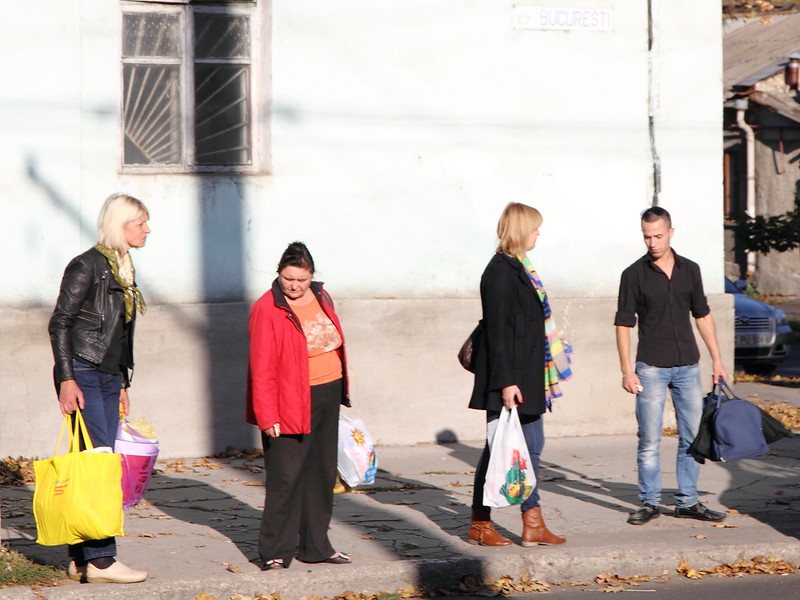Moldova’s Freedom: Iași-Ungheni-Chişinau Natural Gas Pipeline
 Since 2010, Moldova has been a member of the Energy Community, aiming to integrate neighbouring countries outside the EU into its energy market. The Iași-Ungheni natural gas pipeline project connects Romania and Moldova to enhance energy security. Initially, Moldova will source about 50 million cubic meters per year from Romania, while the country’s 2013 consumption was around 1 billion cubic meters. It fosters cross-border cooperation, promotes regional development, and supports the development of modern energy infrastructure. Gas supply began in 2015 to over 10,300 Moldovan consumers, with a planned extension to Chişinau, requiring an investment of €80 million ($92,592,000).
Since 2010, Moldova has been a member of the Energy Community, aiming to integrate neighbouring countries outside the EU into its energy market. The Iași-Ungheni natural gas pipeline project connects Romania and Moldova to enhance energy security. Initially, Moldova will source about 50 million cubic meters per year from Romania, while the country’s 2013 consumption was around 1 billion cubic meters. It fosters cross-border cooperation, promotes regional development, and supports the development of modern energy infrastructure. Gas supply began in 2015 to over 10,300 Moldovan consumers, with a planned extension to Chişinau, requiring an investment of €80 million ($92,592,000).
Initial Steps to Reduce Dependence on Russian Gas
Geopolitical tensions between Russia and Ukraine, the latter being the territory through which Moldova obtained the gas provided by Russia, increased the urgency for alternative sources. The Iași-Ungheni-Chişinau natural gas pipeline, completed in 2020, offered a significant opportunity for energy diversification by enabling access to European gas sources. The capacity of 1.5 billion cubic meters per year, now expandable to 2.2 billion cubic meters, can supply up to 75% of Moldova’s average consumption and 60% of the average during the winter season.
The Ungheni-Chisinau pipeline segment construction began in 2019, covered by Romania’s Transgaz and co-financed by the EU’s ERDF, with a total cost of €150 million ($173,610,000). Although the previous segment had been operational since 2014 from Iași to Ungheni, it was only briefly used in 2015 due to limited demand, due to political disagreements, uncompetitive Romanian gas prices and technical constraints.
Energy Lifesaver: The 2022 Energy Situation
Traditionally dependent on Russian gas routed through Ukraine and the separatist-controlled region of Transnistria, Moldova’s energy was highly vulnerable to political pressure from Moscow. This vulnerability was exposed in 2022 when Gazprom, one of the main russian gas suppliers, unilaterally reduced its gas supplies. In response, Moldova activated the Iași-Ungheni-Chişinau natural gas pipeline, built with Romanian and EU support, to import gas from European markets. The gas measuring station at Ungheni, operated by Vestmoldtransgaz, is capable of handling up to 5 million cubic meters of gas per day, ensuring a reliable supply even during winter. Minister of Energy Victor Parlicov emphasized the pipeline’s role in preventing energy blackmail and announced plans for a new Ungheni-Balti pipeline to connect with Ukrainian storage, reinforcing Moldova’s integration into the regional vertical gas corridor and reducing its dependence on Russian energy.
The Iași-Ungheni-Chişinau Natural Gas Pipeline
After the success of the energy alternative, Minister Victor Parlicov emphasized that expanding the Iasi-Ungheni-Chisinau natural gas pipeline will significantly boost Moldova’s energy resilience and regional integration. Vestmoldtransgaz, the natural gas transmission system operator in the Republic of Moldova, works with proposing upgrades and potential new branches to Balti and Drochia. Strengthening collaboration with Romania, Ukraine and Poland will foster gas transit flexibility. Increased transit reduces pressure on Moldovan consumers and benefits the country. The “Chisinau Belt” project, set for completion by 2031, makes a key step in securing Moldova’s energy future.
Additionally, the EU and Moldova have launched a two-year, €250 million ($289,350,000) strategy to ensure Moldova’s energy independence and integration in the EU energy market, with €100 million ($115,740,000) allocated by mid-April 2025. The plan includes compensation for household electricity costs on the Right Bank and support for vulnerable consumers and institutions, enabling Moldova to disconnect the Right Bank from Russian gas and fully source energy from EU markets.
– Sara Arias Saiz
Sara is based in Leipzig, SGermany and focuses on Business and New Markets for The Borgen Project.
Photo: Flickr
